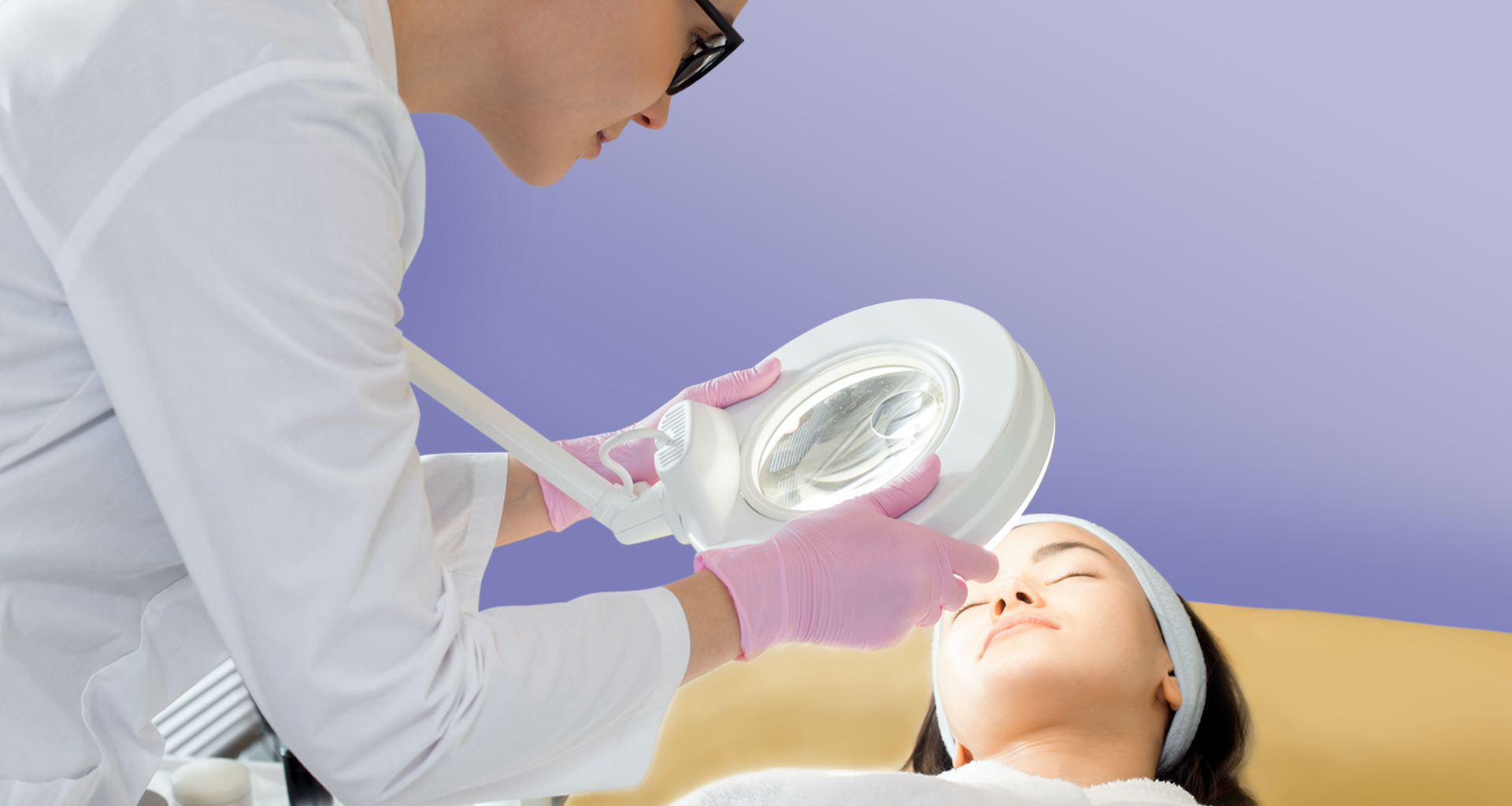17 Sep Look On The Bright Side
Post Summer skin & Hyperpigmentation

HYPERPIGMENTATION: THE FACTS
Beyond any doubt, skin aging isn’t solely about fine lines and wrinkles. Hyperpigmentation is a major issue for many people once they hit their 30s and beyond, and it’s a real challenge to eliminate annoying dark spots with at-home skincare alone. Therefore, it’s vital you know exactly what you’re dealing with when patients come to you for help.
What is Hyperpigmentation?
Hyperpigmentation occurs when melanocytes in the skin’s epidermis become erratic and produce melanin in a non-uniform fashion. This causes certain areas of the skin to become darker than the surrounding skin, making it look patchy and uneven.
This may sound simple enough. However, hyperpigmentation can be extremely hard to diagnose because it’s not a one type fits all. In fact, there are three common types of hyperpigmentation: solar lentigines, melasma and post-inflammatory hyperpigmentation.
The 3 Most Common Types of Hyperpigmentation
1. Solar Lentigines
Often referred to as age, liver or sun spots, solar lentigines occur when melanin production goes into overdrive to protect the skin from overexposure to UV radiation. Solar lentigines are small, freckle-like and found on areas most exposed to the sun, namely the face, shoulders, arms and backs of the hands.
 2. Melasma
2. Melasma
Melasma usually appears in large patches on the face and is the result of hormonal changes within the body. It affects both men and women but is more prevalent in the latter, affecting between 50 and 75 percent of pregnant women in the U.S. (1). Menopause and birth control pills can also trigger melasma.
3. Post-Inflammatory Hyperpigmentation (PIH)
PIH is especially common in skin of color and develops when trauma or injury generates inflammation and discoloration. Acne spots are the main cause, but insect bites, scrapes, rashes and wounds can also develop into PIH if the skin produces too much melanin during healing. Unlike regular scarring, however, PIH is neither pitted nor raised.
How To Treat Hyperpigmentation?
Good news: helping your patients deal with all types of hyperpigmentation just got easier with the launch of TXA Bright, the first of our professional solutions to contain tranexamic acid. This powerhouse ingredient helps reduce melanin synthesis by inhibiting the plasminogen pathway, and has been proven to be just as effective (if not more so) as other professionally prescribed brightening ingredients (2). TXA Bright blends tranexamic acid with sodium hyaluronate and oligopeptide-68 to further support skin brightening, radiance and moisture, offering a brand-new solution for patients looking to enliven their complexion and fade hyperpigmentation with very little downtime.
TXA Bright works synergistically with many professional treatments including IPL, ultrasound and laser therapy, but for optimal results, we recommend applying it with microneedling (0.5mm-1mm) and in conjunction with the HydraCool Plus aesthetic facial device. This allows you to fully customize the treatment to suit each individual’s needs, offering them a fully personal experience alongside superior results.
You could even go one step further and combine TXA Bright with our powerful Glutathione and Ascorbic Acid 20 advanced components to hit discoloration from all angles and give patients the ultimate in hyperpigmentation management. While the tranexamic acid in TXA Bright acts on melanin synthesis before it gets a chance to kick in, glutathione works on melanin during the production process, transforming it from dark eumelanin to the lighter phaeomelanin. Ascorbic acid, meanwhile, supports the decrease of melanin formation after synthesis (3).
from dark eumelanin to the lighter phaeomelanin. Ascorbic acid, meanwhile, supports the decrease of melanin formation after synthesis (3).
Combine all three of these treatments and you’ll know you’re doing everything you can to help patients improve all forms and levels of hyperpigmentation, while strengthening collagen formation and providing free radical protection at the same time. And we think that’s worth its weight in gold.
Can Patients Continue To Improve Hyperpigmentation At Home?
Of course, successfully treating hyperpigmentation doesn’t end when patients leave the clinic. Ensuring they are well informed about their role in managing their concerns with smart lifestyle choices and medical-grade skincare is key.
Antioxidants, AHAs and retinoids are extremely effective at brightening skin tone and reducing discoloration, but no matter the type or cause of hyperpigmentation, an at-home routine should first and foremost include a broad-spectrum sunscreen like our broad-spectrum SRS Skin Protect SPF 50+. Applied generously and regularly, this powerful sun cream offers high protection from both UVA and UBA radiation to quell free radical formation, prevent photodamage and help repress hyperpigmentation.
To learn more about our powerful new TXA Bright cocktail, the revolutionary HydraCool Plus device or our highly effective, non-invasive SRS cosmeceuticals, please contact us at info@emaltd.com.

- “Global Pigmentation Disorders Treatment Market Will Reach USD 8,479.08 Million By 2024.” Zion Market Research, GlobeNewswire, September 04, 2018. https://www.globenewswire.com/news-release/2018/09/05/1565331/0/en/Global-Pigmentation-Disorders-Treatment-Market-Will-Reach-USD-8-479-08-Million-By-2024-Zion-Market-Research.html
- Bahareh Ebrahimi and Farahnaz Fatemi Naeini. “Topical Tranexamic Acid as a Promising Treatment For Melasma.” National Center for Biotechnology Information, U.S. National Library of Medicine, August 2012.
https://www.ncbi.nlm.nih.gov/pmc/articles/PMC4235096/ - AK Mohiuddin, Assistant Professor. “Skin Lightening & Management of Hyperpigmentation.” American Journal of Dermatological Research and Reviews. https://escipub.com/Articles/AJODRR/AJODRR-2019-04-2001.pdf

